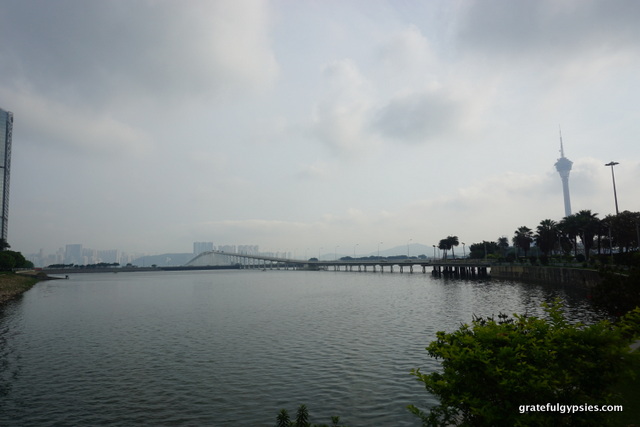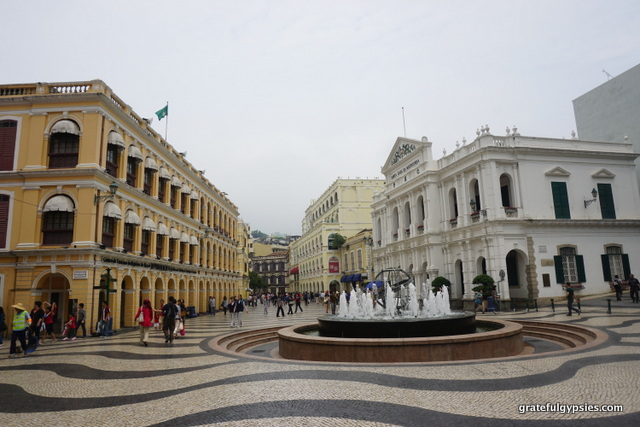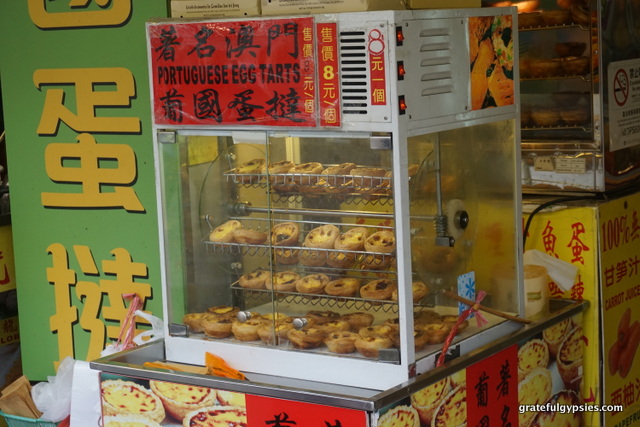Better Know a… SAR (Macau) Posted by sasha on Nov 18, 2015 in Uncategorized
We’re getting to know all corners of China in our “Better Know a…” series. Today, we head to one of just three Special Administrative Regions (SAR), as we visit Macau (澳门 – Ào mén). Perhaps most famous around the world as the “Vegas of Asia,” there’s a lot more to Macau than just casinos.
History

Learn a bit of history at the Macau Museum.
During the Southern Song dynasty, people seeking refuge from invading Mongols settled in the area that is today known as Macau. Later on in the Ming dynasty, fishermen from nearby Guangdong and Fujian provinces also settled here. They built the A-Ma Temple (妈阁庙 – mā gé miào), dedicated to Matsu – goddess of seafarers and fishermen. It’s believed that when the Portuguese arrived and asked for the name of the place, the locals responded “A-Ma-Gau” (Bay of the Goddess A-Ma), and that’s where the name Macau comes from.
Speaking of the Portuguese, Jorge Alvares was the first to land in China in 1513. Twenty years later, Portuguese ships received permission to anchor in Macau’s harbors for trading activities, although they were not allowed on shore. By 1557, they had established a permanent settlement, paying an annual rent to the Chinese. The Roman Catholic Diocese of Macau was set up by Pope Gregory XIII in 1576, transforming Macau into an East Asian center of Christianity.
With Macau flourishing as a trade center, it became a prime target for other world powers. There were many failed attempts by the Dutch to take over, culminating with the Battle of Macau in 1622. Fast forward to 1887 and sovereignty of Macau was given to the Portuguese with the singing of the Sino-Portuguese Treaty of Peking. This agreement was deemed an “unequal treaty” after the founding of the PRC in 1949, and the status of Macau fluctuated over the next several decades. Finally, on December 20, 1999, formal sovereignty of Macau was given back to the Chinese government. It now falls under a “one country, two systems” policy and has a high degree of autonomy until 2049.
Geography

Macau Peninsula and Taipa are connected by this long bridge.
Macau is situated on the southern coast of China on the western side of the Pearl River Delta. It’s bordered by Guangdong province to the north and the South China Sea to the east and south, with Hong Kong about 60 km to the east. There are actually three parts to the SAR – Macau Peninsula and the islands of Taipa and Coloane. Macau was once an evergreen tropical forest, but the hills were stripped for firewood and construction. It’s generally flat, with the highest point clocking in at 172 meters at Coloane Peak.
Climate
Macau has a humid subtropical climate and it lies within the tropics. As is the case with most of South China, the climate here is influenced heavily by the monsoons. The area receives plenty of rain, mostly between April and September. These summer months are not only rainy, but can be very hot and humid as well. Winters are generally cool and pleasant, with the temperature usually staying above 15 °C.
Population

A crowded place it is…
About 643,000 people call Macau home, which may not seem like a whole lot compared to other parts of China. The fact that all of these people are crammed into just 30.3 km2 of land, however, makes it the most densely populated region in the world. According to 2013 figures, there were a staggering 20,497 people per square kilometer. Chinese make up nearly the entire population (95%), while only about 2% are either Portuguese or of mixed Portuguese/Chinese descent – an ethnic group often referred to as Macanese.
Culture

Take in the Portuguese architecture.
Not surprisingly, the culture of Macau is a bit of a mix between Portuguese and Chinese. Cantonese and Portuguese are the two official languages of the region, although you won’t find too many people who can speak the latter very well these days. A few people here speak the distinct Macanese language – known as Patuá – so few in fact that it has been designated a “critically endangered” language. Similar to Hong Kong, traditional Chinese characters are used in Macau.

Mmmmm… egg tarts.
The best places to see the blend of Chinese and Portuguese cultures are in the architecture and cuisine of Macau. Here you’ll find many churches and Portuguese buildings from colonial times, as well as plenty of traditional Chinese temples. As for the food, some of the most famous dishes here are the pork chop bun, egg tart, and chili shrimp.
Famous Places

Ruins of St. Paul’s.
Macau is famous for its two sides – the colonial and the modern. The Historic Center of Macau is a UNESCO World Heritage site featuring around 25 locations that “provides a unique testimony to the meeting of aesthetic, cultural, architectural and technological influences from East and West.” Perhaps the most famous landmark of this area and Macau in general are the Ruins of St. Paul’s (大三巴牌坊 – dà sān bā pái fāng), a 16th-century complex that was once one of the largest Catholic churches in Asia.

Casino Lisboa
On the other hand you’ve got the modern face of Macau, which is dominated by massive casinos. As gambling is illegal on the mainland, busloads of tourists come here day after day to try their luck at hitting the jackpot. Casino Lisboa is the most famous and historic, but it is being eclipsed by newer developments such as the Venetian Macau – now the largest casino in the world.
Unlike mainland China, travelers from many countries can visit Macau visa-free. If you’re interested in taking in a bit of China without the hassle of applying for a visa, why not take a trip to Hong Kong and Macau? Take in the historic architecture, munch on some delicious food, and take a chance at the casino. Who knows – you just might hit it big and win enough to fund that dream trip through China!

Build vocabulary, practice pronunciation, and more with Transparent Language Online. Available anytime, anywhere, on any device.
About the Author: sasha
Sasha is an English teacher, writer, photographer, and videographer from the great state of Michigan. Upon graduating from Michigan State University, he moved to China and spent 5+ years living, working, studying, and traveling there. He also studied Indonesian Language & Culture in Bali for a year. He and his wife run the travel blog Grateful Gypsies, and they're currently trying the digital nomad lifestyle across Latin America.




Leave a comment: